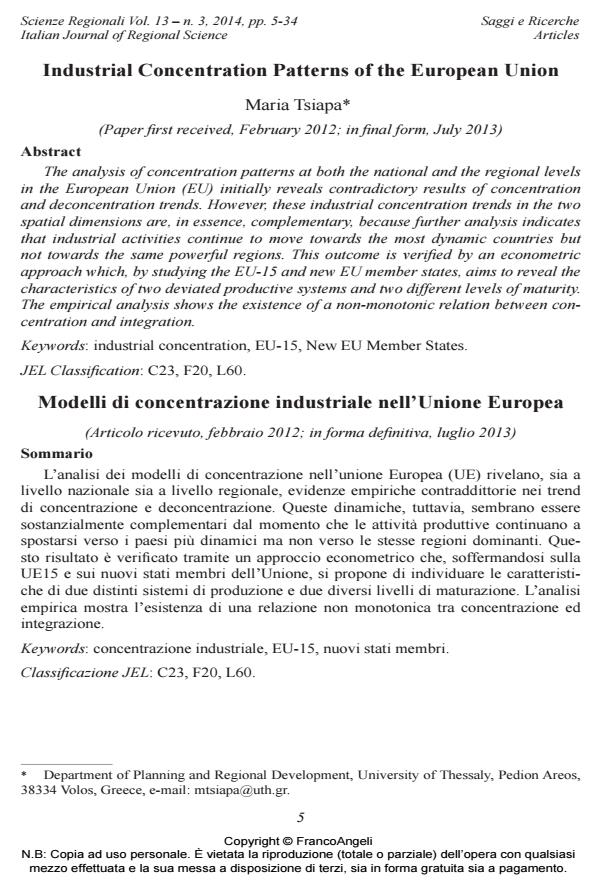Industrial Concentration Patterns of the European Union
Journal title SCIENZE REGIONALI
Author/s Maria Tsiapa
Publishing Year 2014 Issue 2014/3
Language English Pages 29 P. 5-33 File size 888 KB
DOI 10.3280/SCRE2014-003001
DOI is like a bar code for intellectual property: to have more infomation
click here
Below, you can see the article first page
If you want to buy this article in PDF format, you can do it, following the instructions to buy download credits

FrancoAngeli is member of Publishers International Linking Association, Inc (PILA), a not-for-profit association which run the CrossRef service enabling links to and from online scholarly content.
The analysis of concentration patterns at both the national and the regional levels in the European Union (EU) initially reveals contradictory results of concentration and deconcentration trends. However, these industrial concentration trends in the two spatial dimensions are, in essence, complementary, because further analysis indicates that industrial activities continue to move towards the most dynamic countries but not towards the same powerful regions. This outcome is verified by an econometric approach which, by studying the EU-15 and new EU member states, aims to reveal the characteristics of two deviated productive systems and two different levels of maturity. The empirical analysis shows the existence of a non-monotonic relation between concentration and integration. .
Keywords: Industrial concentration, EU-15, New EU Member States
Jel codes: C23, F20, L60.
- The impact of EU Eastern enlargement on urban growth and decline: New insights from Germany's Eastern border Bastian Heider, in Papers in Regional Science /2019 pp.1443
DOI: 10.1111/pirs.12407
Maria Tsiapa, Industrial Concentration Patterns of the European Union in "SCIENZE REGIONALI " 3/2014, pp 5-33, DOI: 10.3280/SCRE2014-003001